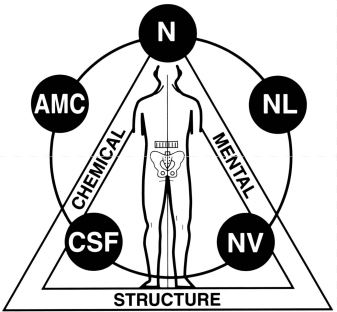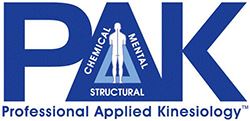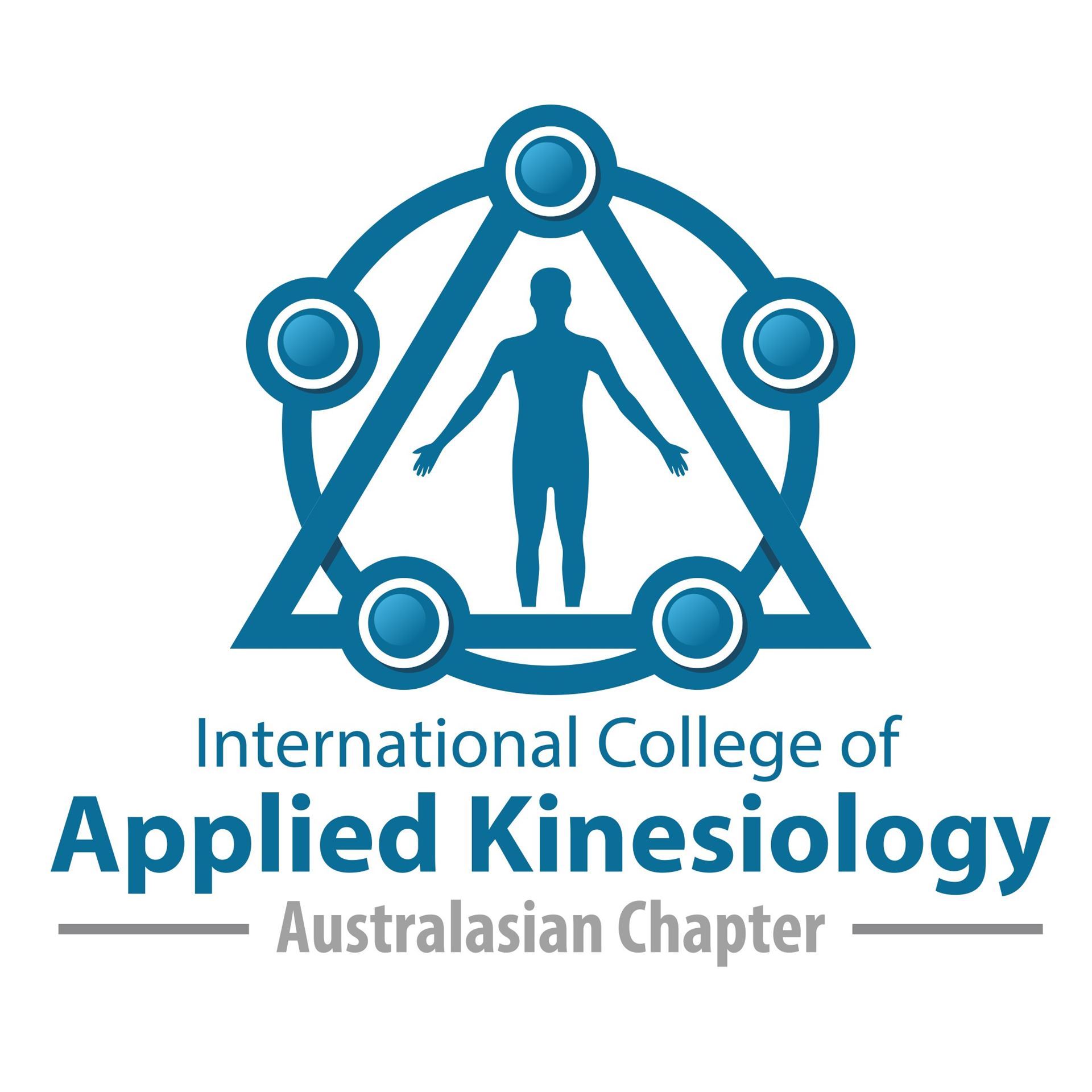Professional Applied Kinesiology Certification Series
If you believe that all problems can be corrected by subluxation reduction stop reading now.
If you want one routine that is applied to all patients, stop reading now.
If you wish to treat the whole person, search for and correct causes, diagnose with more ease, not be an allopathic practitioner, read on.
Kinesiology
Is a diagnostic tool, not a treatment modality. It does not replace other diagnoses but, correctly applied, adds a very useful one.
The essence of kinesiology is the use of the manual muscle testing to evaluate the motor response of the central nervous system to a sensory challenge. That is, it is a test of functional neurology.
Applied Kinesiology (AK)
The founder of Applied Kinesiology, the original technique from which all the other “Kinesiologies” have derived, is the late Dr. George Goodheart, a Chiropractor from USA.
Having this powerful diagnostic tool has led to the refinement and incorporation of many treatment modalities and the development of many new techniques within AK.
The original AK logo encapsulates aspects the AK approach. It incorporates the Triad of Health and the Five Factors of the IVF.
The Triad of Health
Indicates that, although the base is structural (more than 90% of afference derives from structure), the treatment is incomplete if the biochemical and mental/emotional aspects of health are not addressed.The Five Factors of the IVF (Intervertebral Foramen) are:

N Nerve
Subluxation, peripheral nerve entrapment, neurotransmitter disturbance, improper stimulation of receptors.
Applied Kinesiology does not teach how to perform basic diagnostic procedures and adjustive procedures that have already been taught as part of basic professional training.
It does add another set of diagnostic tools to assess:
- the need for correction
- which way to apply the technique (e.g. the best vector to adjust)
- to correlate the condition with other presenting symptoms and signs
- other related conditions whose correction provides stability to the original correction
- whether the corrective treatment was successfully applied.
NL Neurolymphatic Reflexes
These are cutaneous visceral reflexes that affect the lymphatic drainage of specific organs in the body. They relate to specific muscle/organ dysfunctions.
They may be used both diagnostically and for treatment.
NV Neurovascular Reflexes
In 1966, Goodheart related the vascular points to specific organ/muscle combinations. They may be used both diagnostically and for treatment.
CSF Cerebrospinal Fluid
In neurology we are taught “The more rostral, the more central, the greater the effect”.
What is more rostral than cranial function?
Restoration of craniosacral function may effect:
- Muscle function throughout the body.
- Cranial nerve expression and therefore:
- olfaction, vision, visual tracking, audition, gustation, speech, vestibular function,
- postural reflexes, cardiac function, digestion, endocrine function and more.
- Dental occlusion, stomatognathic function.
- Mentation, clarity of thought, emotive state etc.
The advent of Applied Kinesiology diagnostics has allowed easy detection of craniosacral faults and has supplied simple corrective procedures for them.
AMC Meridian Therapy
In Applied Kinesiology the more general term “Meridian Therapy” is used rather than “Acupuncture” as therapy does not necessarily involve puncturing the skin with a needle.
Subluxations tend to recur when the meridian system remains imbalanced, and balancing of the meridian system is not as effective if subluxations are not corrected.
Other aspects of the meridian system are used in forms of diagnosis and treatment that are unique to the meridian system and are not available by other methods.
Some Basic Tools in Applied Kinesiology
Therapy Localization is stimulation of proprioceptive afference by having the patient touch a part of the body where a problem is suspected, or that may be associated with a problem.- It tells us where a problem is but does not tell what the problem is.
- It is an invaluable screening tool that allows us to quickly determine where a problem is.
- It can be used to link two or more problems in the search for an underlying causality.
| Physical | Osseous Visceral |
A holding force or thrust placed into an articulation. A holding force applied to an organ or gland. |
| Chemical / Nutritional | Gustatory Olfactory |
Applied by testing a substance in the mouth. By smelling a substance |
| Mental / Emotional Conceptual | Patient holds a picture, concept or memory. |
Challenge can be used to evaluate all three sides of the triad of health.
Diagnostic Relationships
Relationships between different factors are part of basic AK diagnosis and treatment protocol.
A few of these are:
• Organ / Muscle Relationship A diagnostic window to systemic conditions.
• May find the cause of a subluxation.
• Fixation Muscle Weakness Enhances diagnosis and treatment.
• Lovett Reactors Lovett correction stabilizes an adjustment.
• Meridian / Muscle Relationship A valuable diagnostic tool.
• Posture / Muscle Relationship Know where to look for postural correction.
There are many more interrelationships that enhance diagnosis and longevity of correction.
Using AK, treatment specific to the individual patient and condition is easily applied.
Professional Applied Kinesiology (PAK)
 The term “Kinesiology” and “Applied Kinesiology” have been used by all manner of professional and unprofessional bodies and practitioners. To protect the public and the good name of excellent AK practitioners, the term “Professional Applied Kinesiology” was coined and the phrase and logo registered in most countries, including Australia.
The term “Kinesiology” and “Applied Kinesiology” have been used by all manner of professional and unprofessional bodies and practitioners. To protect the public and the good name of excellent AK practitioners, the term “Professional Applied Kinesiology” was coined and the phrase and logo registered in most countries, including Australia.
To be eligible to attend a PAK Certification series you need to have completed a minimum 4 year full-time recognised tertiary institution course to obtain registration in your given healthcare profession.
Students wishing to attend must be in at least the Fourth Year of their chosen course.
The Certification Series
Is eight weekend seminars with Certification examination on the afternoon of Session 8 for those who wish to show their true colours as a Professional Applied Kinesiologist.
Why Spend Eight Weekends on this Series?
Practitioners who have completed the series in the past have reported:- Greater enjoyment in clinical practice
- The ability to address many more presenting problems
- Increased patient satisfaction
- Increased referral by satisfied patients
- The practitioner’s own health improves due to the knowledge in the series and interaction with fellow PAKers
- Qualify for Membership of the International College of Applied Kinesiology Australasia enjoy all the benefits of membership, including member only information, including newsletters, latest news, video library, clinical tools, and more
- Advanced courses, for example: Retained Neonatal Reflexes, Clinical Biochemistry



